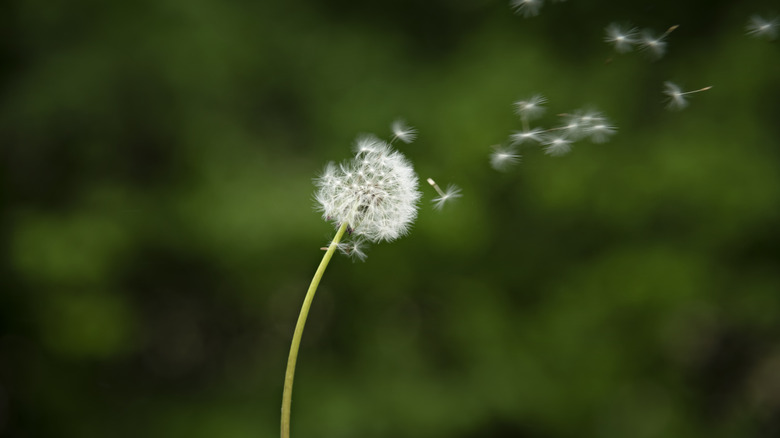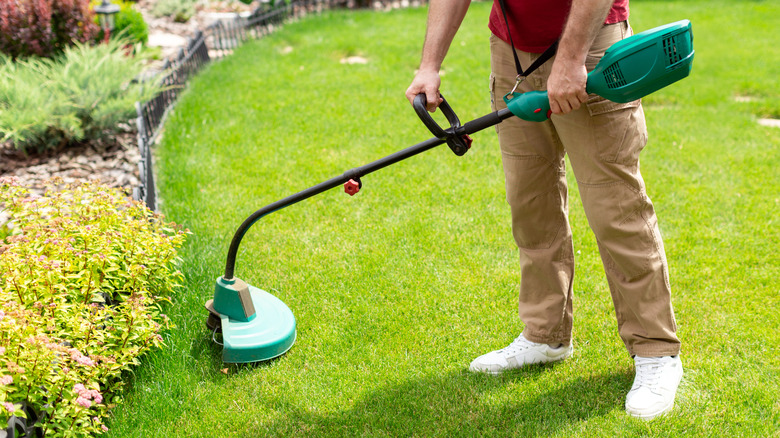Having Dandelions All Over Your Lawn Means More Than You Think
To many homeowners, dandelions are just a stubborn weed, but what they reveal about your lawn is far more complex. Their appearance is often a direct response to underlying issues in your soil. This perennial weed doesn't just show up randomly — it tends to thrive in compacted areas without much grass, especially where calcium is lacking or the soil has been disturbed. Their long taproots can penetrate deeply packed soil, helping to open it up and bring buried minerals, like calcium, closer to the surface. In doing so, they can quietly improve soil structure and even support neighboring plants. Dandelions release ethylene gas, a natural plant hormone, that can encourage fruiting plants nearby to ripen more quickly.
Ethylene also affects how nearby plants grow, which might be why dandelions often take over an area while other wide-leaved weeds struggle to grow alongside them. Dandelions also serve a seasonal purpose. Their yellow blooms show up early in the year, often before other flowers emerge, offering pollinators a much-needed food source when little else is available. They're not the most nutrient-dense option, but in those early weeks, even a modest supply of pollen and nectar can make a difference. Birds like goldfinches, sparrows, and buntings also eat dandelion seeds.
The best way to fight dandelions is to strengthen your lawn
If dandelion blooms are taking over your yard, it may be less about what's wrong with the soil and more about what's missing on the surface. A thin, stressed, or over-mowed lawn leaves plenty of space for weeds to settle in, and dandelions are quick to take advantage. These plants spread fast. Each dandelion flower head can release over a hundred seeds, which may travel more than 1,500 feet on a breeze. Once settled, dandelions develop deep taproots that anchor them firmly and draw nutrients from far below. Even a small root fragment left in the soil can grow into a new plant.
Still, that doesn't mean you need to remove every dandelion in your yard. In fact, allowing dandelions to grow in less-manicured parts of your lawn can help support biodiversity and pollinators. For more refined areas, focus on prevention over removal. Mow at the correct height for your grass to reduce turf stress, overseed patchy spots, and fertilize properly. Dandelions thrive in potassium-rich, nitrogen-rich, but calcium-poor soils.
Deadheading fading blooms can also reduce seed spread, and removing seedlings in high-traffic zones can help maintain balance. As for timing, fall is the most effective season for any targeted treatment, as the plant is storing nutrients, and combined with winter stress, this can reduce regrowth. Skip home remedies like vinegar, dish soap, or Epsom salts — there's no solid evidence they work, and they may harm beneficial insects. Instead, build a healthy lawn that leaves little room for dandelions to settle in the first place.

